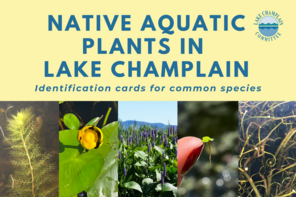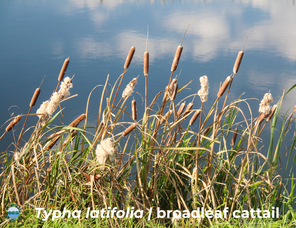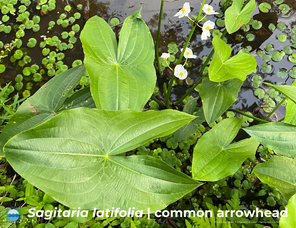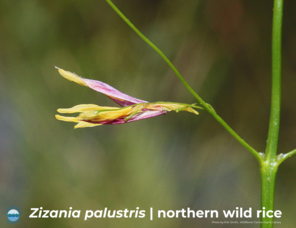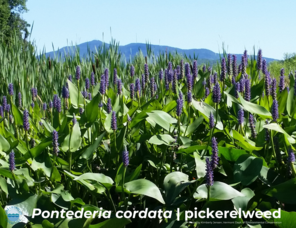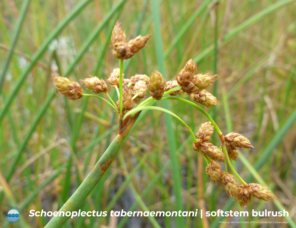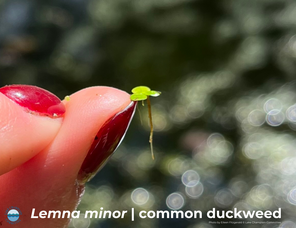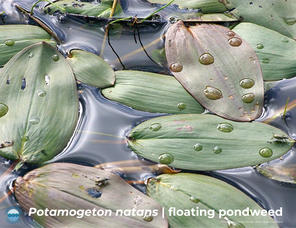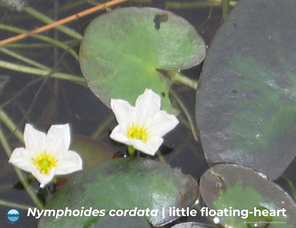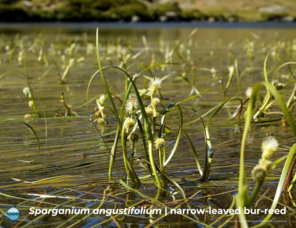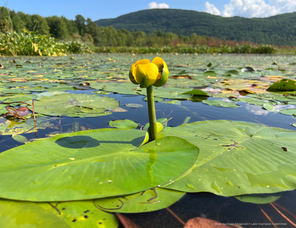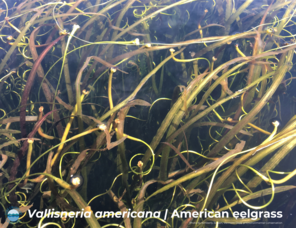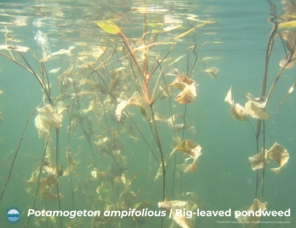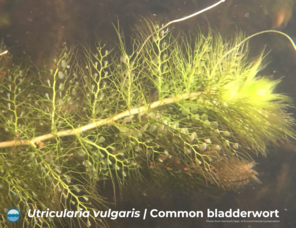Native Aquatic Plants of Lake Champlain
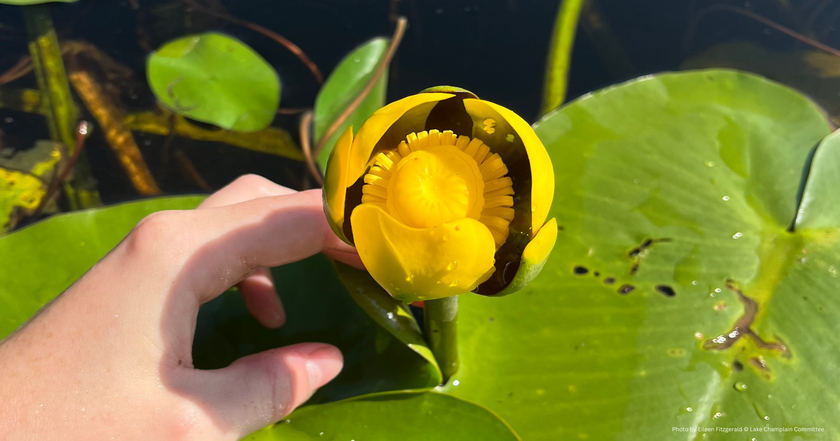
Aquatic plants are a common sight in the Lake Champlain Basin’s waterbodies, yet the roles native species play in aquatic ecosystems are undervalued. Too often, native plants are viewed as weeds, rather than integral components of freshwater lake ecology.
LCC wants to change this perspective by sharing some of our favorite aquatic plants native to Lake Champlain. These plants provide habitat for fish, birds, and invertebrates; are key in the chemical and physical ecological function of Lake Champlain. They also have long-existing and continued relationships with people as foods, medicines, building materials, in ecological restoration, and more. Plants give Lake Champlain its unique character, and it is time the native species of our region are given their due.
We created factsheets and identification cards for 15 different aquatic plants native to the Lake Champlain watershed. We focused on 5 emergent plants (plants that are rooted in soil and poke out from the water's surface), 5 floating leaf plants (plants that are either rooted or free-floating whose leaves float on direct surface of the water), and 5 submersed plants (plants that are mostly or entirely underwater).
We also have full sets of the fifteen artistic depiction of our focal plants available as prints to borrow for display in spaces like libraries, classrooms, meetinghouses, and more.
To learn more about borrowing our prints and hard copies of our educational materials, check out our sign-up page.
Native Aquatic Plants of Lake Champlain - identification cards for common species
These cards focus on 15 unique and commonly-found species of plants native to Lake Champlain and surrounding waterways. Each card features illustrative photos, descriptions of habitat preferences, botanical attributes, and ecological contributions to Lake Champlain. Scientific names using binomial nomenclature are used in addition to common names - while a plant can have many common names, the scientific name helps us make sure we’re talking about the same species. Use these cards as flashcards to help commit the plants to memory, or as identification tools in the field.
Native Aquatic Plants of Lake Champlain - double-sided poster
This poster highlights 15 aquatic plants native to Lake Champlain, including one of the world’s smallest flowering plants, a lightning-fast carnivorous plant, a descendent of the oldest flowers on Earth, a plant that photosynthesizes under ice, and many more. Each plant is is described with illustrative photos, identification tips, and notes on the relationship between the plant and people--as food, medicine, building materials, and ecological restoration. There are also notes on the ecological contributions each plant plays in aquatic systems, including biological aspects like its role on the trophic web as a food source, chemical aspects like nutrient uptake through roots, and ohysical aspects like stabilizing shoreline sediments.
Contact us at lcc@lakechamplaincommittee.org to get phsical copies of the poster (printed on 18" x 24" paper) or the ID cards (full laminated sets available as 6" x 4" pocket guides).
Emergent plants
Broadleaf cattail
Broadleaf cattail is native to New England, where it is found in wet soils and shallow water. With an enormous capacity for growth, it can aggressively colonize areas of human disturbance. Known as “the supermarket of the swamp,” all parts of the plant have been widely used by Native Americans for medicine, food and crafts.
Common arrowhead
Common arrowhead (Sagitaria latifolia) is a colony-forming, aquatic perennial native to most of the contiguous US and southern Canada, including the Lake Champlain region. It rises above water level to a height of 3 feet. The long, emergent leaves are distinctly arrowhead shaped and they produce a white flower.
Northern wild rice
Northern wild rice (Zizania palustris) is a robust, native, aquatic, annual grass that produces large grains. The plants grow in shallow water in small lakes and slow-flowing streams; often, only the flowering head of wild rice rises above the water. The grain is eaten by dabbling ducks and other aquatic wildlife.The grain was historically and is still gathered and eaten throughout North America.
Pickerelweed
Pickerelweed (Pontederia cordata) is a common emergent aquatic plant native to the Eastern US. It is distinguished by its large, waxy leaves and showy purple flowers that point up 2-3 feet above the water‘s surface. Its large seeds are eaten by ducks and its foliage are eaten by muskrats and deer
Soft-stemmed bulrush
Soft-stemmed bulrush (Schoenoplectus tabernaemontani) has a wide native range--it‘s found nearly worldwide, including the Lake Champlain Basin. It is a rhizomatic, emergent, aquatic plant. Soft-stemmed bulrush typically forms a slowly-spreading clump of rush-like stems (culms) to 4-8 feet tall.
Floating-leaf plants
Common duckweed
Among the smallest of all flowering plants (the smallest on earth is a different species of duckweed), common duckweed (Lemna minor) is a free-floating native aquatic perennial that forms a floating mat of minute foliage on the water surface. It is dispersed around the world.
Floating-leaf pondweed
There are 32 other native pondweed species in New York and 28 in Vermont. Floating-leaf pondweed (Potamogeton natans) is very common throughout the Lake Champlain basin. The shape of the floating leaves depends on the speed of the current, with faster current resulting in more elongate the leaves and less cordate leaf bases.
Little floating-heart
Little floating-heart (Nymphoides cordata) is native aquatic plant that resembles a miniture pond lily. It has small, floating, heart-shaped leaves with purple undersides.
Narrow-leaved bur-reed
Narrow-leaved bur-reed (Sparganium angustifolium) is a perennial native aquatic plant producing a floating stem with long, narrow, flattened leaves which can be quite long, sometimes reaching over two mete producing a floating stem with long, narrow, flattened leaves which can be quite long, sometimes reaching over two meters. It can become abundant, practically covering the surface of the water.
Yellow pond lily
Yellow pond lily (Nuphar variegata) is a native aquatic plant with alternate, simple leaves, on submerged stems.is an aquatic plant with alternate, simple leaves, on submerged stems. It is one of the most iconic aquatic plants and is abundant in the Lake Champlain basin‘s waters.
submersed plants
American eelgrass
American eelgrass (Vallisneria americana) is a native aquatic plant with ribbon-like and dark-green leaves, and grows below the water surface. It is common throughout Lake Champlain and frequently washes ashore in clumps. It makes for a popular snack among wildlife.
Big-leaved pondweed
There are 32 other native pondweed species in New York and 28 in Vermont. Big-leaved pondweed (Potamogeton amplifolius) is a native aquatic plant that is common through much of North America including Lake Champlain. Its leaves are larger and have more veins than any other pondweed species, and it often grows in somewhat deeper water.
Common bladderwort
Common bladderwort (Utricularia vulgaris) is a native aquatic plant and is unique among submersed species in Lake Champlain--it‘s a carnivorous plant and is technically the fastest plant in the world. The tiny bladders on the plant are traps that, when the hair-like triggers around the bladder are set off, suck in water and seal in the aquatic microorganism that set it off--a process that takes about 10 milliseconds.
Common waterweed
Common waterweed (Elodea canadensis) is one of the most common native aquatic plants in Lake Champlain. It‘s important food and habitat for a variety of wildlife.
Northern watermilfoil
Northern watermilfoil (Myriophyllum sibiricum) is a native aquatic plant that is often confused for the invasive Eurasian watermilfoil. It generally grows over a meter long, its green stem drying white. It is lined with whorls of fanlike green leaves divided into many narrow, feathery lobes (5-12 per leaflet; fewer than the similar-looking invasive Eurasian watermilfoil).

